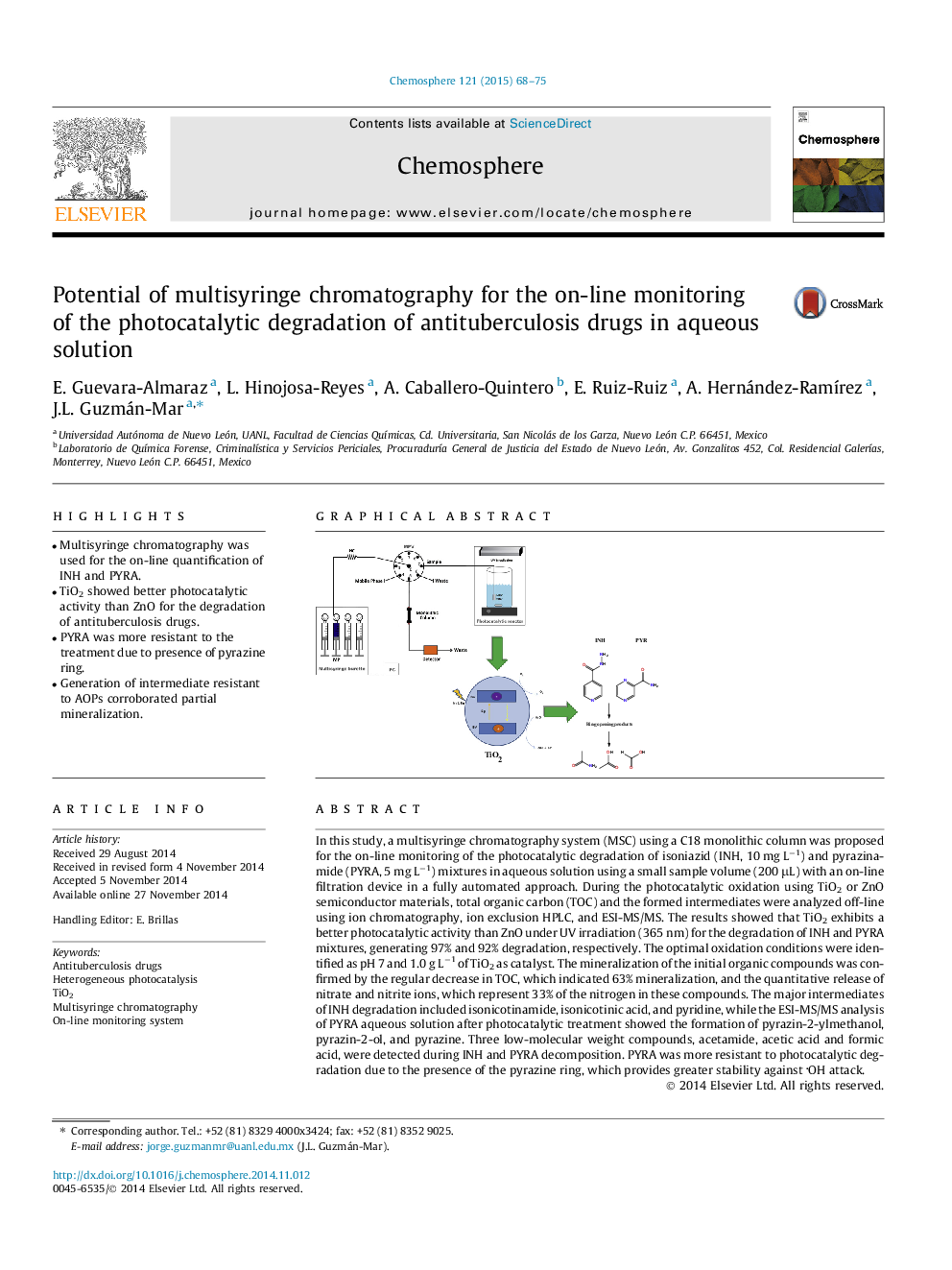| کد مقاله | کد نشریه | سال انتشار | مقاله انگلیسی | نسخه تمام متن |
|---|---|---|---|---|
| 4408564 | 1618850 | 2015 | 8 صفحه PDF | دانلود رایگان |
• Multisyringe chromatography was used for the on-line quantification of INH and PYRA.
• TiO2 showed better photocatalytic activity than ZnO for the degradation of antituberculosis drugs.
• PYRA was more resistant to the treatment due to presence of pyrazine ring.
• Generation of intermediate resistant to AOPs corroborated partial mineralization.
In this study, a multisyringe chromatography system (MSC) using a C18 monolithic column was proposed for the on-line monitoring of the photocatalytic degradation of isoniazid (INH, 10 mg L−1) and pyrazinamide (PYRA, 5 mg L−1) mixtures in aqueous solution using a small sample volume (200 μL) with an on-line filtration device in a fully automated approach. During the photocatalytic oxidation using TiO2 or ZnO semiconductor materials, total organic carbon (TOC) and the formed intermediates were analyzed off-line using ion chromatography, ion exclusion HPLC, and ESI-MS/MS. The results showed that TiO2 exhibits a better photocatalytic activity than ZnO under UV irradiation (365 nm) for the degradation of INH and PYRA mixtures, generating 97% and 92% degradation, respectively. The optimal oxidation conditions were identified as pH 7 and 1.0 g L−1 of TiO2 as catalyst. The mineralization of the initial organic compounds was confirmed by the regular decrease in TOC, which indicated 63% mineralization, and the quantitative release of nitrate and nitrite ions, which represent 33% of the nitrogen in these compounds. The major intermediates of INH degradation included isonicotinamide, isonicotinic acid, and pyridine, while the ESI-MS/MS analysis of PYRA aqueous solution after photocatalytic treatment showed the formation of pyrazin-2-ylmethanol, pyrazin-2-ol, and pyrazine. Three low-molecular weight compounds, acetamide, acetic acid and formic acid, were detected during INH and PYRA decomposition. PYRA was more resistant to photocatalytic degradation due to the presence of the pyrazine ring, which provides greater stability against OH attack.
Figure optionsDownload as PowerPoint slide
Journal: Chemosphere - Volume 121, February 2015, Pages 68–75
